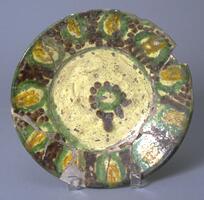52 UMMA Objects
52 UMMA Objects

Iranian (Iranian)
Deep bowl with vegetal and calligraphic designs
10th century
Museum purchase made possible by the Margaret Watson Parker Art Collection Fund
1961/1.185
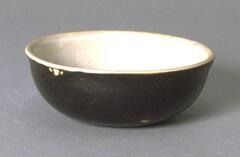
Chinese (Chinese (culture or style))
Jar Cover
800 – 999
Given in memory of James Marshall Plumer by John Maxon, Architecture and Design '41
1961/2.1

Chinese (Chinese (culture or style))
Covered Five-tube Jar
10th century
Gift of Mrs. Henry Jewett Greene for The Mr. and Mrs. Henry Jewett Greene Memorial Collection
1971/2.74A
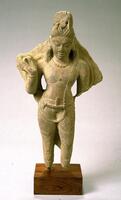
Indian (Indian (South Asian))
Standing figure of Shiva
900 – 1099
Gift of Mark and Iuliana Phillips
1998/1.181
![<p>This bowl is typical of early-Goryeo celadon in terms of shape and pattern. Similar examples have been excavated from sedimentary layers from the Kiln no. 10 at Yongun-ri, Gangjin-gun, Jeollanam-do. The entire inner wall is decorated with chrysanthemum sprays incised in fine lines. Chrysanthemum spray design is commonly found in Goryeo celadon produced between the 10th and the 11th centuries along with the motifs of chrysanthemum, scroll, cloud, parrot, and wave. The design is resemblent to those found in Yue ware, but the clay and glaze were sintered better and the glaze was exquisitely fused to turn into the beautiful color without crackles. Six refractory spurs were used to support the bowl during firing. The bowl was restored after a breakage into two halves.<br />
[<em>Korean Collection, University of Michigan Museum of Art </em>(2014) p.92]</p>
<br />
Stoneware bowl with celadon glaze. The bowl is decorated by an incised line stretching parallel to the rim, bounding a chrysanthemum design below. <p>This bowl is typical of early-Goryeo celadon in terms of shape and pattern. Similar examples have been excavated from sedimentary layers from the Kiln no. 10 at Yongun-ri, Gangjin-gun, Jeollanam-do. The entire inner wall is decorated with chrysanthemum sprays incised in fine lines. Chrysanthemum spray design is commonly found in Goryeo celadon produced between the 10th and the 11th centuries along with the motifs of chrysanthemum, scroll, cloud, parrot, and wave. The design is resemblent to those found in Yue ware, but the clay and glaze were sintered better and the glaze was exquisitely fused to turn into the beautiful color without crackles. Six refractory spurs were used to support the bowl during firing. The bowl was restored after a breakage into two halves.<br />
[<em>Korean Collection, University of Michigan Museum of Art </em>(2014) p.92]</p>
<br />
Stoneware bowl with celadon glaze. The bowl is decorated by an incised line stretching parallel to the rim, bounding a chrysanthemum design below.](/media/W1siZiIsIjIwMjIvMDkvMjQvM2djdWZxdmhieV9kZWZhdWx0LmpwZyJdLFsicCIsInRodW1iIiwiMjQweDIwMCJdXQ?sha=8591e65ef730993a)
Korean (Korean (culture or style))
Bowl with Chrysanthemum Design
900 – 1099
Gift of Bruce and Inta Hasenkamp and Museum purchase made possible by Elder and Mrs. Sang-Yong Nam
2004/1.220
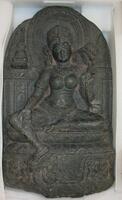
Indian (Indian (South Asian))
Tara
10th century
Gift of Dr. and Mrs. Leo S. Figiel and Dr. and Mrs. Steven J. Figiel
1981/2.156

Japanese (Japanese (culture or style))
Buddha, standing (extremely worn)
800 – 999
Gift of Mrs. Caroline I. Plumer for the James Marshall Plumer Collection
1969/2.12
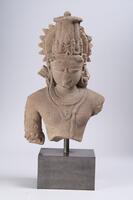
Indian (Indian (South Asian))
Surya (sun-god)
900 – 1199
Gift of Dr. and Mrs. Leo S. Figiel and Dr. and Mrs. Steven J. Figiel
1981/1.314
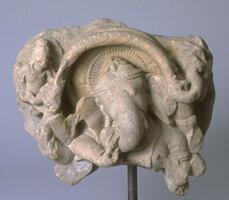
Indian (Indian (South Asian))
Ganesha
900 – 1199
Gift of Dr. and Mrs. Leo S. Figiel and Dr. and Mrs. Steven J. Figiel
1981/1.317
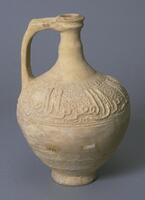
Iranian (Iranian)
Jug, narrow neck, single handle, band of decorative inscriptions at shoulder
900 – 1199
Museum Purchase
1959/1.91

Indonesian
Four-Armed Esoteric Deity, probably Avalokitesvara
10th century
Gift of Mark and Iuliana Phillips
2005/2.77
Loading…
